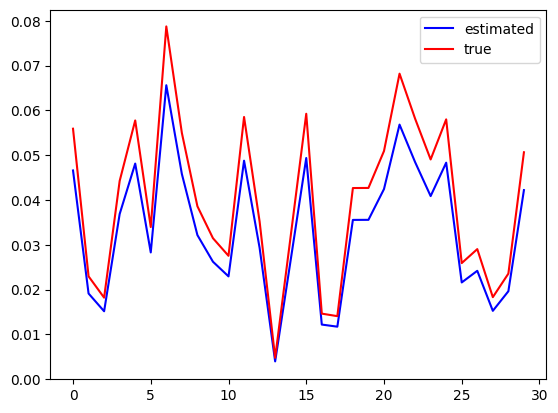Kullback_Leibler Projection using Python package Cvxpy
This post shows you how to solve a convex optimization problem using Cvxpy - a Python package. Here, the problem instance we consider is the projection from a point onto a simplex using Kullback-Leibler divergence.
Specifically, we consider the following optimization problem:
Here is the Kullback-Leibler divergence between positive vectors and . It is non-negative and convex in with definition given by:
The Python code for solving this problem is provided below:
import cvxpy as cp
import matplotlib.pyplot as plt
import numpy as np
np.random.seed(123)
n = 30
x = cp.Variable(n)
ones = np.ones(n)
c = np.random.rand(n)
c = c/c.sum()
c = c * 1.2
objective = cp.Minimize(ones.T @ cp.kl_div(x, c))
constraints = [ones.T @ x == 1, 0<=x]
problem = cp.Problem(objective, constraints)
problem.solve()
# print("Optimal value:", problem.value)
# print("Optimal solution:", x.value)
plt.plot(x.value, color="blue", label="estimated")
plt.plot(c, color="red", label="true")
plt.legend()
plt.ylim(0.)
plt.show()
The obtained result is given in the following figure.
